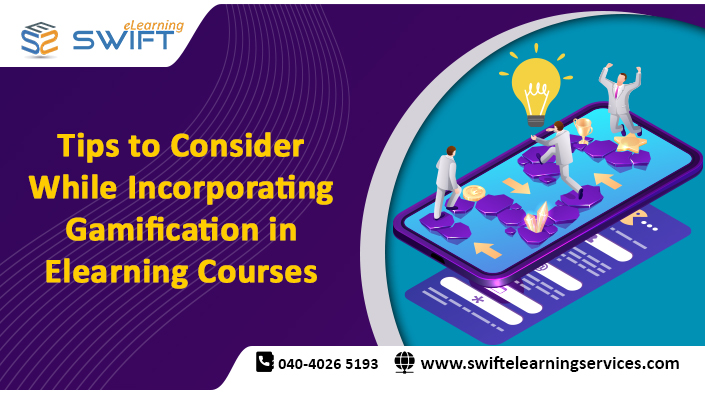Significance of gamification in eLearning
Many psychological studies have, time and again, reiterated that we learn better when we get engaged in learning. Interactive and engaging learning is not just limited to children – it is pertinent to all age groups, who are learning something new. Despite our age, everyone loves playing games. Fun and learning successfully go hand in hand. When learning happens through gaming, then that would sound more effective.
It is estimated that around 95% of learners enjoy using gaming-inspired elements in their training. Interactive and engaging learning makes the learners learn fast and helps them retain the knowledge for a longer period of time. In fact, the primary goal of gamification in training is also to promote the enthusiasm of the learners to learn better and retain forever.
We can understand this better by knowing the retention percentages:
- We can recall 10% of what we have learned through reading.
- 20% of what we have learned through hearing.
- If learning is aided with visuals and audio, the retention goes to 30%.
- If we are allowed to interact by getting involved in something, the retention would be more than 50%.
Incorporating gamification in eLearning training courses
Gamification – as many content developers wrongly postulate – need not be a game design – which means designing a fully-developed video game. Gamification in training courses can be as simple as considering to include gaming elements in different ways, such as:
- Levels: Learners mount levels set out for them. This encourages them to complete more topics and courses. For example, if the learners are supposed to complete 4 courses in the span of 4 months, then there will be 4 levels for them to go ahead.
- Points: These points are given to mark achievement and progress. Generally, points are connected to levels. So, it is like a certain number of points would make a level.
- Badges: These badges are awarded to the learners as and when they complete a task or activity in the course. Each time the learner completes a topic or course successfully, a badge is attached to their profile.
- Leader-boards: The learner’s progress is displayed on the leaderboard, along with that of other participants. Points and rankings are displayed on a leaderboard where all the learners can have an idea about who is doing well in the training program.
- Gamified quiz: A timed quiz that makes the learner engaged, on his toes.
Through gamification in eLearning training, you can also include story-telling, problem-solving challenges, scenarios with game elements, and gamification assessment.
Content developers who want to go a big way with their gamification strategy can resort to simulations. In these simulated scenarios, gamification uses virtual reality (VR) and augmented reality (AR) to teach prohibited and dangerous situations in the relevant training courses.
Gamification is good – But, here are some things to note!
Before proceeding with the thought of including gamification in online training, one should clearly have an understanding of the purpose of gamification. The purpose of gamification in training is to add elements of gaming into the instructional design so that the course becomes more engaging, interactive, leading to great learning and retention for the learners.
Gamification should not be done just because it is the trend of the day and for the namesake of having gamification in your course. The focus of gamification should be more on augmenting instructional design in terms of making it relevant to learning, rather than providing a mere ‘game experience’ to the learners. If gamification goes astray from the purpose of yielding the intended results, it just ends up as a failure.
- Make gamification relevant and apt in the course: When you are sticking to your course objective, you will certainly know where gamification sounds relevant and where not. By understanding the course content, you will know whether the course needs gamification or not. If yes, where exactly in the course!
- Know that it is a bigger task than building your regular content: If gamification doesn’t yield the desired results, you will end up wasting resources and many man-hours. Before taking up the task, have a thorough discussion with the gamification team to explain the learning objective so that they can come up with an appropriate gamification strategy.
- Ensure that learners realize your purpose behind gamification: Perhaps, nothing would be more disappointing than learners ending up ‘enjoying the game’ rather than realizing the purpose of the gamification – the learning objective. When gamification doesn’t turn out to be learning-oriented, it would be mere entertaining for the learners. Ensure that you stick to a concept while doing the gamification so that the learners don’t go off track with it.
Conclusion
If one doesn’t get the desired outcome from gamification, it is not the problem of the tool. It might have gone awry at any point of the whole cycle – recognizing the purpose of gamification, developing instructional design, building the game, and presenting the game in the course.
Questions that are more appropriate for you to pose before incorporating gamification in the course are:
- Is gamification meeting the purpose you have anticipated, based on the learning objective?
- Will it make the learners get engaged and realize the purpose?
If the answers are ‘yes, then, you are all set to go with gamification. And, gamification would certainly be a payoff!



